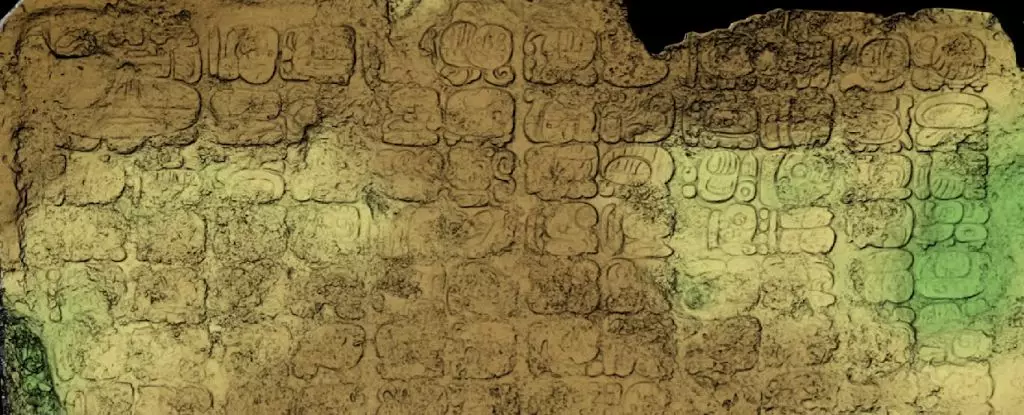In the heart of the Mexican jungle, deep within the Yucatán Peninsula, lies the ancient Maya city of Cobá. Recently, archaeologists made a groundbreaking discovery at this historical site – a vast stone slab with a remarkable inscription of 123 glyphs. This sacred slab was found tucked away in what was once the floor of a sacred pool near the towering Nohoch Mul pyramid. The glyphs on the slab describe the founding date of a town called Keh Witz Nal, or “Deer Mountain”, dating back to 12 May 569 CE. Additionally, the inscription reveals the name of a previously unknown Maya ruler, K’awiil Ch’ak Chéen, invoking the Maya god of lightning, K’awiil.
Cobá, located in the state of Quintana Roo on the eastern side of the Yucatán Peninsula, is believed to have been built by the Maya as early as 50 BCE. This once-glorious city was continuously inhabited for over 1,500 years, with the most recent buildings dating back to between 1200 and 1500 CE. At its peak, Cobá was a bustling cultural hub with an estimated 50,000 inhabitants. The city still retains its original Maya name, Ko’ba a, meaning rough waters, and is adorned with intricate engravings and sculptures that offer insight into the spiritual and aesthetic lives of its ancient inhabitants.
The newly discovered inscription on the stone slab sheds light on the rulers of Cobá, with 14 rulers previously identified, including three women rulers, one of whom reigned for an impressive 40 years. The glyphs suggest that many of these rulers adopted the name of the god K’awiil, emphasizing the importance of this deity in the city’s political and religious landscape. The meticulous carving and arrangement of the glyphs hint at the careful craftsmanship and attention to detail of the ancient Maya civilization.
Excavations at Cobá are conducted with great care and precision, as Mexico’s National Institute of Anthropology and History (INAH) works diligently to uncover and restore the city’s monuments that have been hidden by the jungle and time. The stone slab, found at the bottom of a pool, is a stunning 11 square meters in size, with glyphs intricately carved into its surface. A detailed 3D reconstruction has been created to aid in further study without causing harm to the ancient artifact.
The discovery of the stone slab with its intricate glyphs at Cobá offers a fascinating glimpse into the rich history and culture of the ancient Maya civilization. As researchers continue to study and preserve this valuable archaeological find, we can hope to uncover more secrets hidden within the walls of this ancient city, further enriching our understanding of the Maya people and their enduring legacy.

Leave a Reply